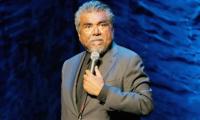According to the Federal Reserve’s Survey on the Economic Well-Being of US Households in 2017 40 percent of adults said they would be unable to handle an unexpected $400 expense without borrowing the money or selling something. When was the last headline screaming that the workforce participation rate still hasn’t recovered from the 2008 crash – it currently stands at 62.7 percent (and a lot lower in many localities), down almost 3.5 percent from 66.2 in January 2008 (it has barely budged since the end of 2013). Surely the much touted unemployment rate would look different taking this into account. Where are the big city protests in the aftermath of the Supreme Court taking a hammer to public sector unions with Janus v AFSCME? Or its recent ruling upholding the use of mandatory arbitration clauses in employment contracts that require class action lawsuit waivers? The use of arbitration clauses has skyrocketed the past two decades. And while we’re on the subject one would think that life expectancy falling for the third straight year would generate more chatter than it has thus far.
However, it is ultimately not difficult to see the logic behind all of this, and as always in America race is a prominent factor. Black and Latino workers don’t get honored with the working class badge, as if deindustrialization passed over Detroit and Baltimore, or somehow rural poverty doesn’t include fruit and vegetable picking. Popular notions about ghettoization and ‘culture’ are so inherent that the racism and classism hardly generate an ounce of scrutiny. When was the last time the words ‘ghetto’ went together with ‘banks’, ‘capital flight’, or ‘disinvestment’?
On one level this is something of a two way street. ‘White Privilege’ is an oft shouted expression on campus these days. It is obviously true that most of the high powered jobs in DC are still going to white men, yet it is just as true that it is the white working class that accounts for the greatly increased mortality. The opioid crisis is the largest part of it, killing around 115 people every day, but by no means the only part of the despair deaths resulting from drugs, obesity, and alcoholism. Mass shootings always spark calls for gun control but overshadow the fact a majority of guns deaths in America are suicides and that suicides have skyrocketed 30 percent this century. Much of the increase is due to middle-aged white Americans- suicides by middle aged white women increased by 80 percent. In 2014 white males, 31 percent of the population, accounted for 70 percent of American suicides. As for cultural ‘pathologies’ such as single parenthood and unwed mothers, the numbers for working class whites are quickly approaching other groups. Marriage has become an institution of the well off. It is the working class family that is in shambles.
Why this wretched state of affairs? On one hand economics has no real place in conservative populism. In that world the likes of the Koch Brothers, Mercers, Waltons, and Trumps are spared the dishonor of being elites- that is reserved for Hollywood and college professors looking down in condescension on the pious masses (meanwhile universities have long become rackets where most younger professors grind out a precarious career as adjuncts).
Yet on the other hand the working class as such simply isn’t the world of urban liberals. For many liberals the white working class, and rural poor, is written off as the racist GOP base voting against their own interests, and especially against the cultural issues liberals so value. In New York, where the combined poverty rate and near poverty rate encompass a majority of the city’s population, protestors have justly swarmed the city’s airports in protest of Trump’s Muslim travel ban and the separation of children from their parents at the border. The Women’s March was a major event. Protests with a working class theme are largely nonexistent. This appears to be the case in the country as large. Intersectionality seems to about everything except the working class. Protesting the names of buildings on campus or the existence of statues bring history to light but ultimately are displays of radical attitudes not radical politics.
The working class has always had it rough in the United States. It has had to struggle to the limit for every crumb it has ever gotten. Racial divisions have always been a detriment. Labor history here has been the most violent of any industrial nation. American mythology about the ‘land of opportunity’ is powerful even as economic mobility is in decline.
This article has been excerpted from: ‘The Invisible Class: Workers in America’.
Courtesy: Counterpunch.org
An aeroplane of the national flag carrier of Pakistan is seen in this file photo. — AFPWhile Pakistan considers...
Representational image of a graph depicting various variables. — APP/FileInitiated by the centre and fiercely...
In this picture taken on April 16, 2023, people throng a market area during shopping in Lahore. — AFPOne of the...
Honour crimes also target men. In Sikandar Ali Lashari vs The State, SHC upheld conviction passed by ATC for honour...
If Sindh earmarks Rs20 million per police station, it will cost only Rs10 billion to make them effective first...
A complex and difficult policy environment seems to be highlighted by US’s recent application of sanctions on...







